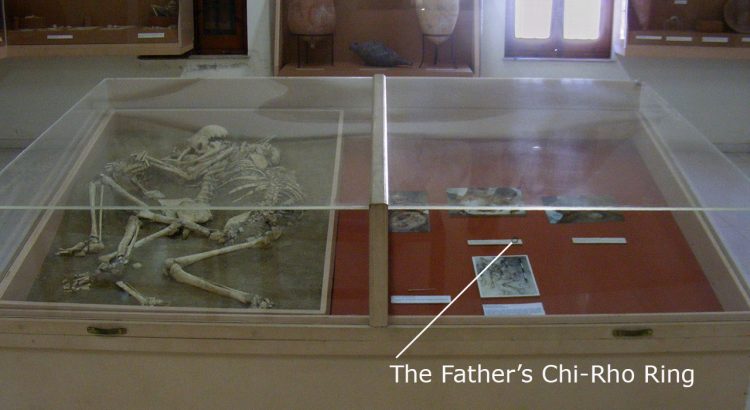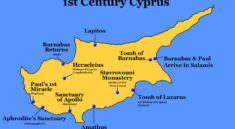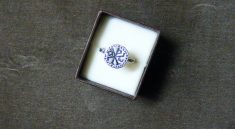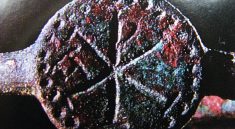The skeletal remains of the family, a father, mother, and infant, were unearthed by Drs. David Soren and Jamie James and their team in 1987 in Kourion, Cyprus. The discovery of human remains is considered a major find by archaeologists everywhere, and those of the Earthquake House were no exception, for six other skeletons were found as well: four humans and two animals. As students and professors swept away millimeter upon millimeter of centuries-old baked soil, the 1600 year old story began to unfold.
This discovery of the remains was in itself of colossal archaeological value, yet it is the father’s Christian ring that brings a fresh perspective to a previously little-known history of the early Christians in Cyprus. The find tells us how they lived and the jewelry they wore, for the father wore the Chi-Rho sign given to Constantine by God just 50 years before. The ring proves that the heavenly symbol had spread across the Mediterranean and was well known to Christians living in Kourion by 365AD.
The Young Father Dies Protecting His Family…The Ring Beside Him
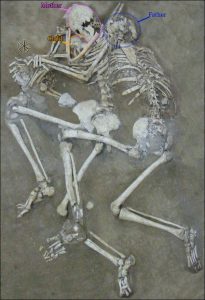
During the last seconds of his life, the husband’s sole concern was the protection of his wife and child. As their bedroom collapsed, its roof broken by the thunderous crashing of countless stones, this lion-heart father used the only thing he had to shield those he loved……his own body.
The evidence of his last desperate act was entombed for 1600 years until 1987, when the archaeological team excavated the site.
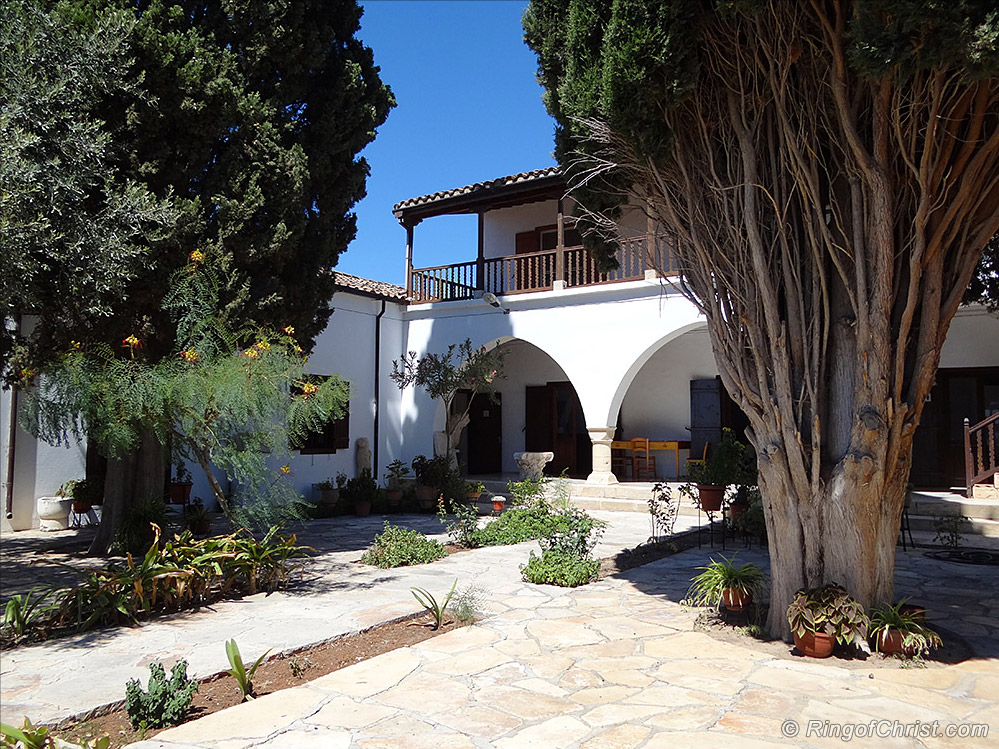
The Great Earthquake of 365 A.D.
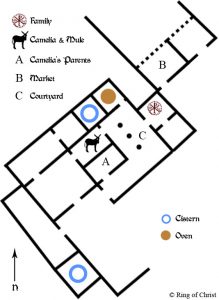
In their book, “Kourion – The Search for a Lost Roman City,” professors Soren and James believe the events could have unfolded in the following way:
Sometime around dawn on July 21, 365 AD, the inhabitants of the house were awakened by the braying of a mule, tethered to a heavy stone trough in an inner room.
As animals do, the agitated mule sensed the coming earthquake, so the thirteen year old girl, given the name of Camelia by the archaeological team, went to calm the frightened beast.
In an adjacent room an older man and woman were already up preparing for the day; they were most probably Camelia’s parents.
Across the courtyard in a small room, the young family had been sleeping until the braying began.
The nineteen year old mother, possibly Camelia’s sister, was resting on her right side, cradling her eighteen month old baby in her arms, while her husband was lying close behind her.
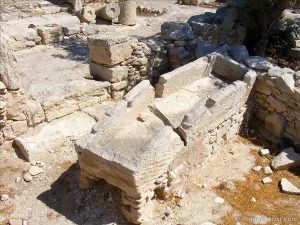
When the first, and weakest, of the earthquake’s three waves hit, lasting four seconds, roof tiles fell and plaster ceilings and walls crumbled weakening the main building.
The force of this tremor threw Camelia who was with the mule to the ground; it dislodged her silver-plated hair pin, identical to that worn by her mother. She was surely injured and covered in debris, and dragged herself to the door, where the archaeologists found her.
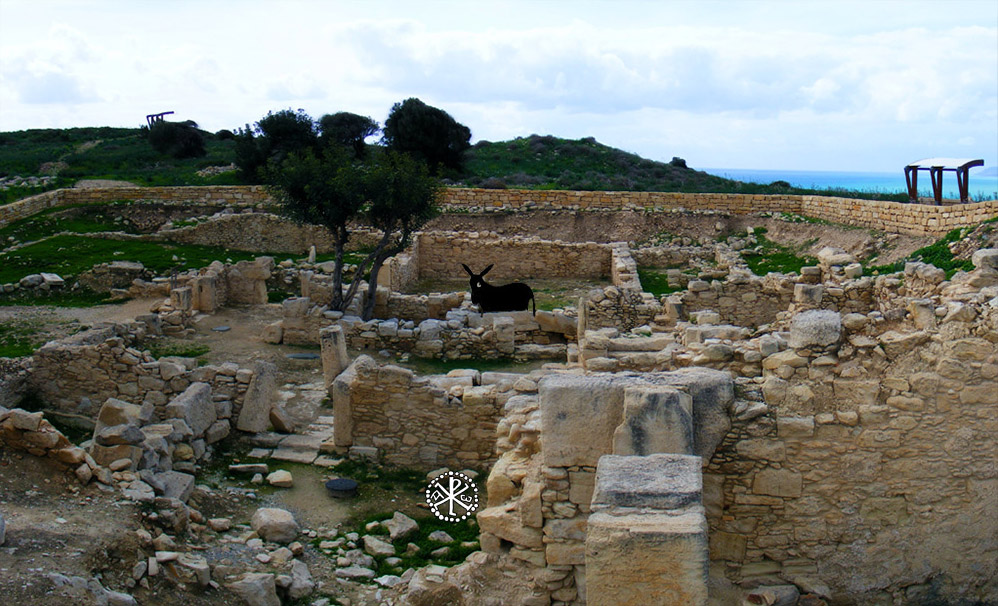
In the neighboring room, Camelia’s parents were thrown to the ground by the first quake’s force which also knocked down everything around them.
Caught in bed by the first tremor, the young family across the courtyard would probably not have suffered as much as the people in the main house. The mother grasped her child to her breast, its head resting on her right shoulder and its hands tightly clinging to her.
There was silence for about 5 seconds, a short interlude before the second, massive earthquake hit.
Camelia trapped on the ground in the small room was trampled by the terrified mule as it tried to get out when the second quake struck. Girl and mule were both crushed. The parents lay as they had fallen, in the adjacent room.
Clinging to one another in their bed, the young family across the courtyard met an equally tragic fate.
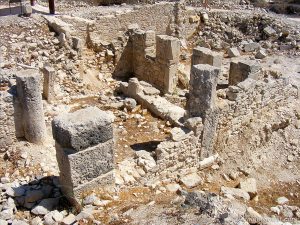
Unlike the house itself, the outbuilding in which the young family had been sleeping was not as solidly built as the main residence, thus offering them at least some chance of survival following its collapse.
Their room, however, was adjacent to what is thought to have been Kourion’s municipal market building, an imposing two-storey structure built of monumental stone blocks weighing many hundreds of pounds each.
Already weakened by the earthquake’s first wave, this building toppled outward and crashed through the roof of the simple dwelling crushing the family.
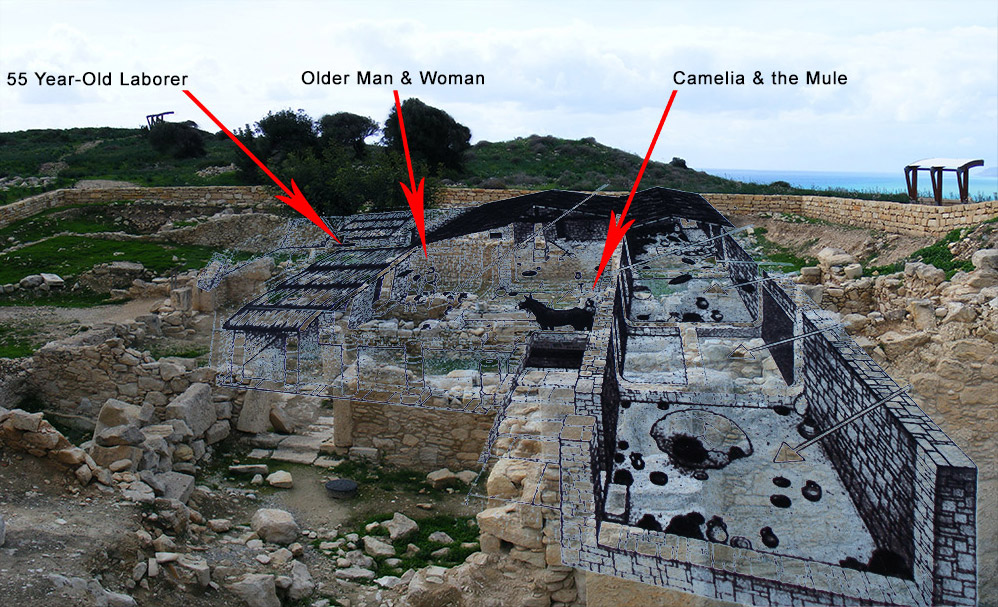
As archaeologists removed layer upon layer of rubble, the grizzly sequence of events was revealed. The older couple lay covering themselves with their arms; Camellia smothered face-down during her desperate struggle to escape, the dead mule on top of her. A possible laborer or brother, crushed with his cat were in a backroom.
The Christian father was unearthed as he had died, shielding his family from harm, the Christian ring only inches from his hand. His left arm and leg were thrown over his beloved family, trying desperately to protect his wife who cradled their child in her arms.
Professors David Soren and Jamie James have told a story that few can tell.
